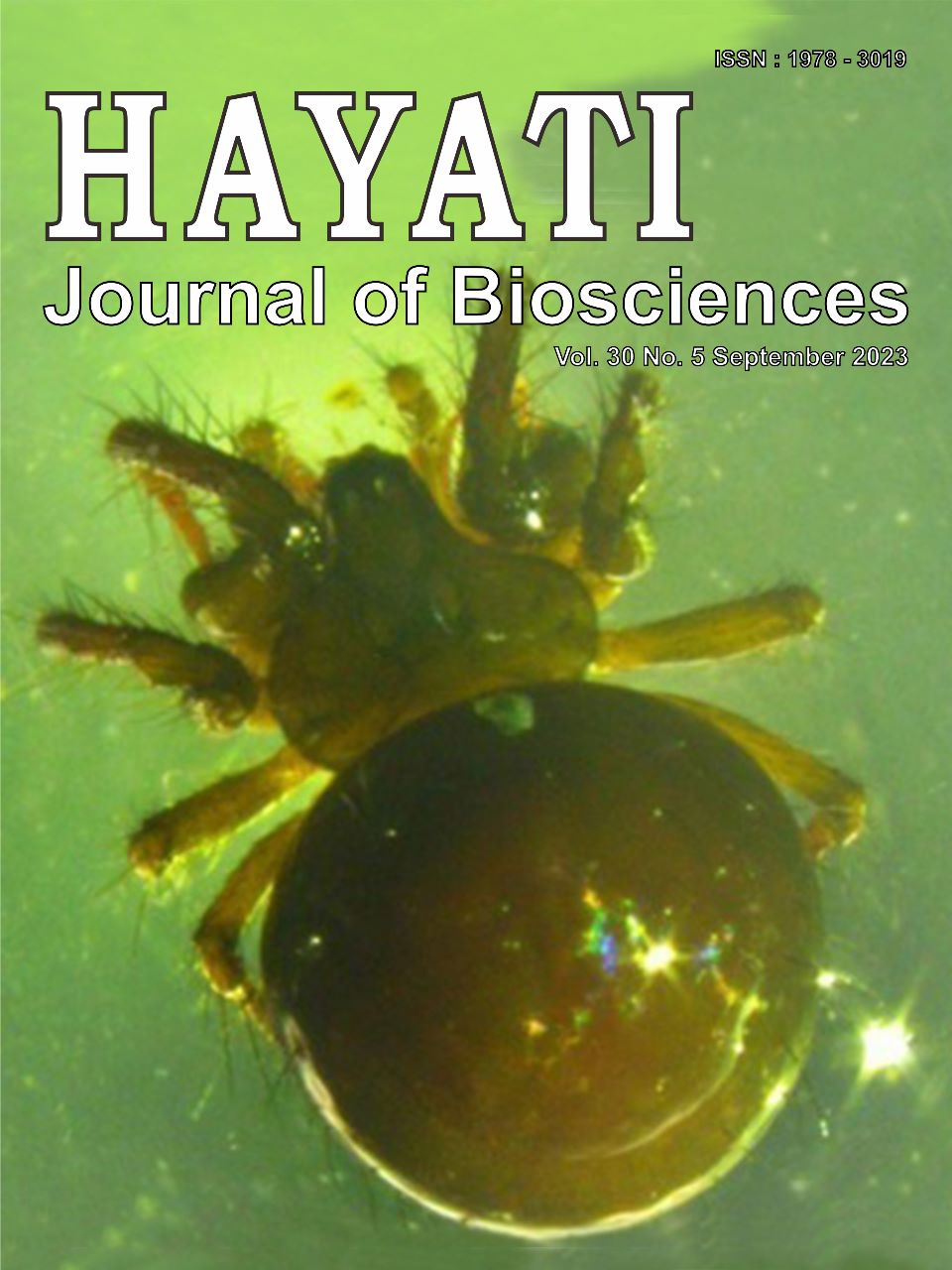Antifungal Substances Produced by B. subtilis Strain W3.15 Inhibit the Fusarium oxysporum and Trigger Cellular Damage
Abstract
Soybean Fusarium wilt and root rot disease caused by a necrotrophic ascomycete pathogen, F. oxysporum, triggered severe damage to the plant tissues and organs and impacted heavy losses. Biocontrol agents, Bacillus subtilis, were commonly used to produce a broad spectrum of antifungal substances and were gradually used in biocontrol studies for plant disease management. Investigation and determination of the inhibiting mechanism of antifungal substance produced by B. subtilis on F. oxysporum should be done to protect the soybean plant. This study revealed that basal nutrient broth (NB) gives the best antifungal activity. The stationary phase of the bacterial growth curve was obtained on two days of cultivation and showed the maximum antifungal activity against F. oxysporum. Ethyl acetate (EA) extraction of bacterial supernatant generated crude EA extract, which showed half inhibition (IC50) at 306.42 µg/ml obtained from the dose-response regression curve. Post-treatment mycelia of F. oxysporum with bacterial extract were demonstrated as hyphal deformation followed by malondialdehyde (MDA) accumulation. Furthermore, cellular leakage on fungal cells that may be triggered by antifungal compounds from strain W3.15 occurred. Last, the related antifungal compounds were predicted to be epicatechin and benzophenone from the LC-MS/MS analysis of crude EA extract. Accordingly, the biocontrol agent B. subtilis strain W3.15 promises a strong potency for biofungicide development.
Downloads
Copyright (c) 2023 Rury Eryna Putri, Nisa Rachmania Mubarik, Laksmi Ambarsari, Aris Tri Wahyudi

This work is licensed under a Creative Commons Attribution-NonCommercial 4.0 International License.
HAYATI J Biosci is an open access journal and the article's license is CC-BY-NC. This license lets others distribute, remix, tweak, and build upon author's work, as long as they credit the original creation. Authors retain copyright and grant the journal/publisher non exclusive publishing rights with the work simultaneously licensed under a https://creativecommons.org/

























.png) IPB University
IPB University Department of Biology
Department of Biology The Indonesian Biological Society
The Indonesian Biological Society 

